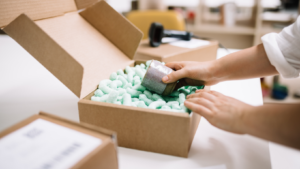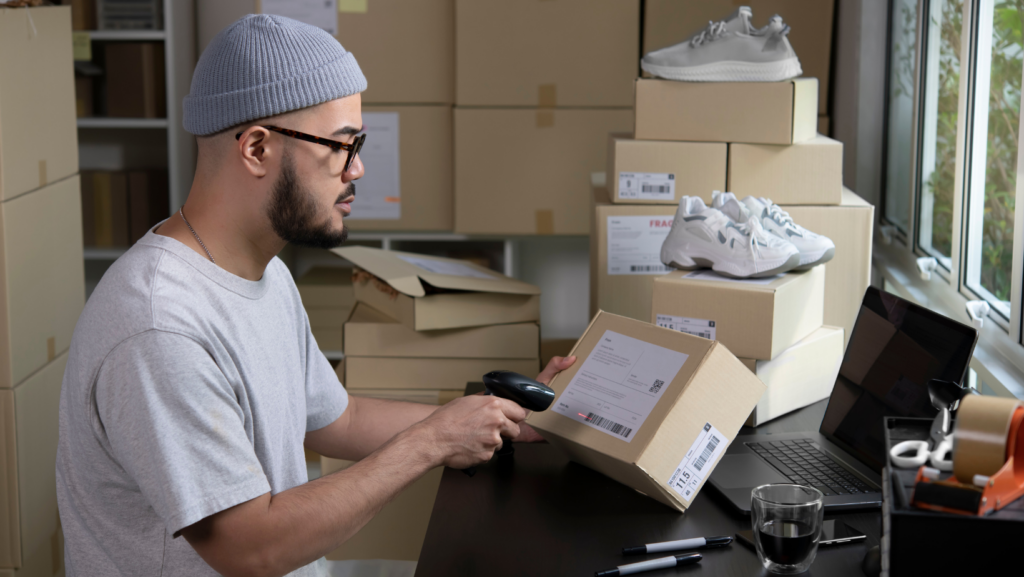In the digital marketplace, one aspect that’s often overlooked yet critically important is e-commerce packaging. It’s the first physical touchpoint between an online retailer and the consumer, creating a lasting impression that can make or break customer retention.
E-commerce packaging isn’t just about a box and bubble wrap. It’s a strategic decision that involves choosing the right materials, design, and size to ensure product safety and enhance brand image. This article will delve into the intricacies of e-commerce packaging, shedding light on its importance and how it can be optimized for success in the online retail world.
So, whether you’re a seasoned online retailer or just starting out, understanding e-commerce packaging can give you a competitive edge. Buckle up as we unpack the world of e-commerce packaging.
What is E Commerce Packaging
 To navigate successfully through the digital marketplace, comprehension of how e-commerce packaging functions is paramount. This section dives into the basics, then explicates its importance in the digital retail space.
To navigate successfully through the digital marketplace, comprehension of how e-commerce packaging functions is paramount. This section dives into the basics, then explicates its importance in the digital retail space.
What is E Commerce packaging, in essence, is the process of preparing merchandise for shipments made through online retail. It involves selecting boxes, bubble wraps, or padded envelopes that are proportionate to product sizes. High-grade packaging materials, tissue paper, for instance, and adhesive tapes are chosen to ensure product safety. Decisions about the design and style of packaging materials often entail careful thought, given they’re instrumental to a brand’s identity. For example, a fashion brand could opt for vibrant, trend-setting packaging material, while an eco-friendly brand might choose a minimalistic approach with biodegradable materials.
Importance in the Digital Retail Space
In the expansive digital business landscape, to know what is e commerce packaging is more than a necessity—it’s a silent salesman. It’s the first real touchpoint between a consumer and an online retailer, making it fundamental in creating a top-notch unboxing experience. Poor packaging can lead to damaged products, resulting in dissatisfied customers and negative reviews. On the other hand, well-thought-out and structured packaging can boost brand perception, increase customer loyalty, and trigger repeat purchases. For instance, Amazon’s easy-to-open, yet sturdy packages have become a key element in their customer satisfaction journey. Therefore, striking a balance between functionality and aesthetics in e-commerce packaging can be a game-changer in the digital retail space.
Design Considerations for E-Commerce Packaging
 To understand what is E commerce packaging and how it influences customer engagement and brand recognition, whilst ensuring the protective function. Two vital aspects deserve special attention: Protection and durability, and Branding and aesthetics.
To understand what is E commerce packaging and how it influences customer engagement and brand recognition, whilst ensuring the protective function. Two vital aspects deserve special attention: Protection and durability, and Branding and aesthetics.
Protection serves as a cornerstone in e-commerce packaging design. Amid the transits, warehousing, and deliveries, e-commerce items encounter multiple risks. To prevent damage, e-commerce packaging needs high durability. A perfect material choice, for instance, corrugated cardboard, provides high strength and resilience. It stays robust against pressure, humidity, and temperature variations, ensuring product safety in multiple contexts.
Branding, on the other hand, impacts customer perception about a brand. Effective e-commerce packaging communicates a brand’s ethos, enhancing its connection with the user. So, aesthetics plays a crucial role alongside protection. Recyclable or biodegradable materials, for example, convey a brand’s commitment to environmental sustainability. When designs incorporate innovative unboxing experiences or have a visually appealing layout, it creates a lasting impression, thereby bolstering brand identity.
Sustainable E-Commerce Packaging Solutions
 In the realm of e-commerce packaging, sustainability emerges as a pivotal consideration. Brands actively seek eco-friendly packaging alternatives, demonstrating a commitment to environmental responsibility while enhancing customer affinity.
In the realm of e-commerce packaging, sustainability emerges as a pivotal consideration. Brands actively seek eco-friendly packaging alternatives, demonstrating a commitment to environmental responsibility while enhancing customer affinity.
To know what is E commerce packaging, and how industries rely heavily on biodegradable materials, embracing sustainable packaging options. These options commonly include organic elements such as cornstarch, mushrooms, and seaweed which, compared to traditional packaging materials, present a markedly lower environmental burden. For instance, a number of companies use corrugated cardboard, renowned as a recyclable material with the ability to biodegrade efficiently, significantly reducing waste. Integrating these materials into e-commerce packaging strategies constitutes a meaningful shift toward environmental stewardship, aligning with growing customer expectations for sustainability.

